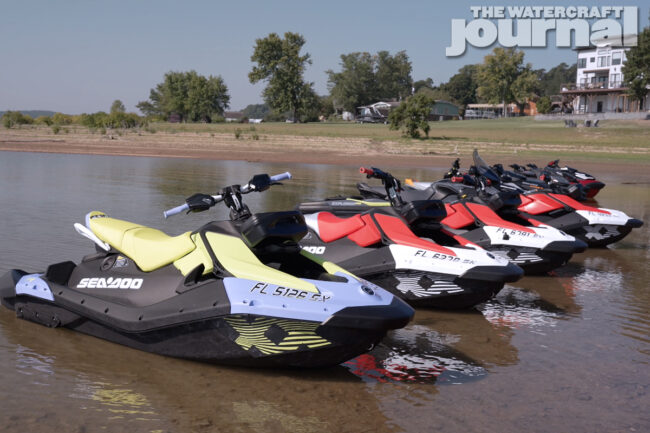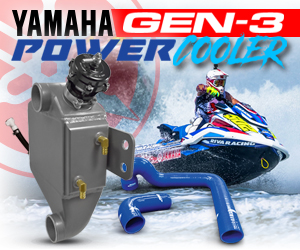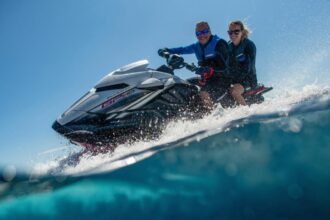
It’s easy to forget just how dire the personal watercraft industry was looking a decade ago. Sales had plummeted nearly by half from only four years previous, with manufacturers producing heavy, oversized full-trim 3-seaters that rivaled the costs of most motorcycles and even a few entry-level cars. Moreover, the average age of the typical new unit buyer had crept closer to retirement age than ever before. Coupled with a decimated economy, PWC sales were going down the tubes.
That is until Sea-Doo wholly bucked the trend and introduced the world to the Spark. Built from a two-piece polypropylene hull and deck, and powered by a repurposed snowmobile engine, the Sea-Doo Spark was a fraction of the weight and size of even then-entry level watercraft. Developed under the charge of “two on a trailer for $10,000,” appealed to much more than the originally targeted audience of youthful 20-somethings.

Sea-Doo’s Spark – and the eventual Trixx model – reignited an interest in stripped-down, frills-free playful watercraft; machines that reveled in being loose, slippery and just a little rowdy. Sold standard as a two-seater (with an optional 3-seater seat and deck extension), the Spark was ideal for the single rider looking to execute powerslides, hoping white caps and spinning wildly on demand. It was, by most accounts, a flawless throwback to the runabouts of the mid-1990’s.
Equally, Sparks became the primary candidates for lake house docks and toys for the grandkids to use while visiting grandma’s cabin. In addition to luring in a new crop of PWC enthusiasts year after year, Sparks also made for perfect “gateways” into larger, more capable watercraft. By all metrics, the Sea-Doo Spark was critical in reinvigorating new unit sales, even if the customer left with another model. Spark was bringing people back to the showroom.

So for its 10th anniversary, it made sense that Sea-Doo would equally retain much of what made the Spark so significant as it did redesign it. Starting from what has been carried over from before, the list is extensive: the hull, which borrows heavily from the mid-1990’s HX, is identical. So to is the ACE 900, the perky-little 899cc 3-cylinder producing 90-horsepower standard for the Trixx (base level Sparks come with either 60 or 90-ponies).
Equally, the Spark retains the same closed-loop cooling system (the heat extractor runs along the hull, not the ride plate as with other Sea-Doos), 7.9-gallon fuel cell and 425-pound dry weight. But that’s about where the similarities end. A new top deck is equally reimagined as it is improved. Gone are the harsh corners and edges that could bruise riders; replaced with smooth, flowing lines making the Spark stand out among its larger siblings.

While retaining its open wishbone front structure, the redesigned deck includes standardized drop-in/pop-up LinQ cleats; a smoother bond rail with a quartet of drop-in portals for LinQ Lite camera mounts and even one on the deck’s nose. Beneath that panel is a standardized mount for the LinQ Floating Boombox stereo. Beneath the seat is a tray for the fire extinguisher – but this time is removable exposing a large engine access portal. (The removable side panel carries over as well.)
The meager glovebox has been somewhat expanded to include a watertight phone cubby. A more aggressive tread pattern has been molded into the bare footwells, which can begin to ache after riding standing up barefoot for too long. Ergonomics include a wider, thickly padded seat that narrows at the knees. For Trixx, the changes go even further, as the standard Trixx comes as a solitary single-seater with a racy lower bolster behind the driver, and the manually-adjusted handlebar riser.

The handlebars now share the same full-sized control pods as the RXP-X and GTR-X with similar exposed handlebars. Button response is palpable and easy to navigate while at speed. Below the handlebar riser is a new 4.5-inch digital display, the same shared with the Recreation segment GTI models. This larger dash is uncluttered and easy to read while underway. New for 2024 is the signature “Trixx Mode” and redesigned iBR reverse bucket.
True its name, Trixx Mode is a setting exclusive to the Trixx 1-up and 3-up (oh yeah, did we forget to mention there’s no 2-up model? Yeah, we thought that was weird too.). Accessible by toggling through the different modes on the left keypad (Sport, Touring, Eco), Trixx Mode provides sharper initial acceleration to help ramp the Spark up and out of the water, and also permits full throttle reversing for backwards donuts and other tricks.

To better achieve these tricks, the Trixx has a special-designed iBR reverse bucket for the intent of executing better tail stands and reverse 360’s (and much, much more). Thickly padded footrests help keep the driver’s balance while performing such stands; we ourselves maintained a tail stand for well over a minute and a half. We found Sport mode still optimal to perform the best powerslides, and were able to reach a top speed of 55mph at 7,700rpm.
Priced with an MSRP of $9,099, the 2024 Spark Trixx continues the tradition of the best selling make of the best selling model in the last decade. Sea-Doo reported that by 2021, 70-percent of all Spark sales were Trixx’s, and with this latest version offering all of the same fun with more standard features and an improved design, there’s no doubt that like-minded buyers gravitate to this raw, exhilarating throwback to how jet skiing used to be – and really ought to remain.






















